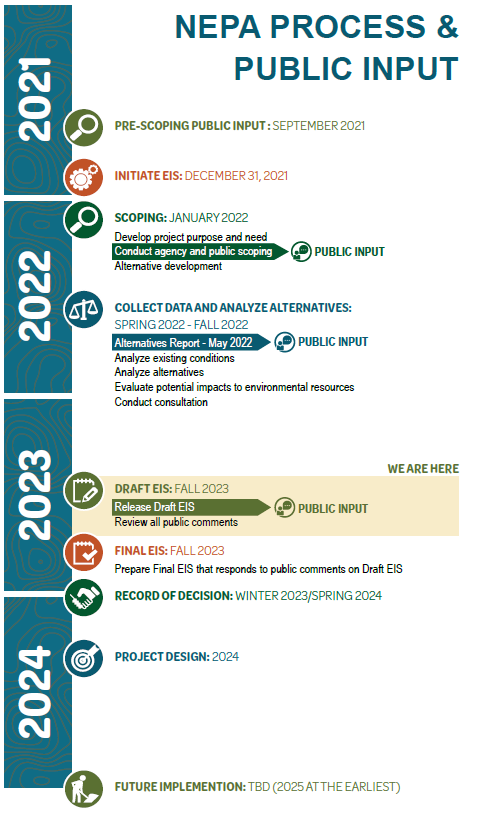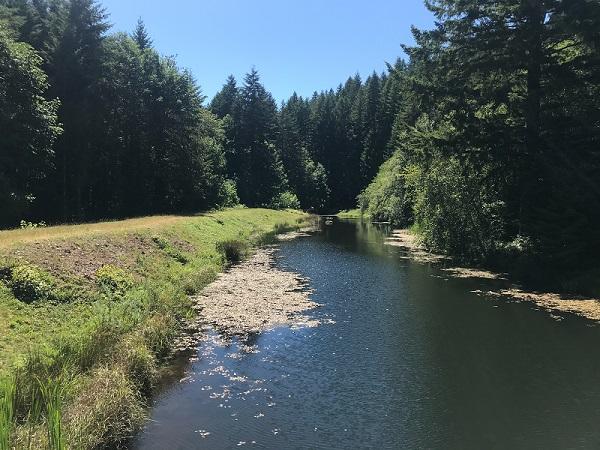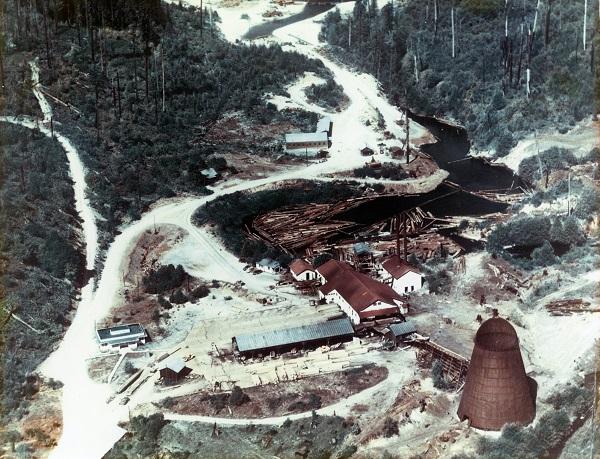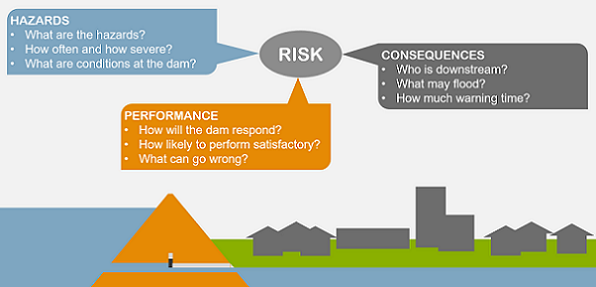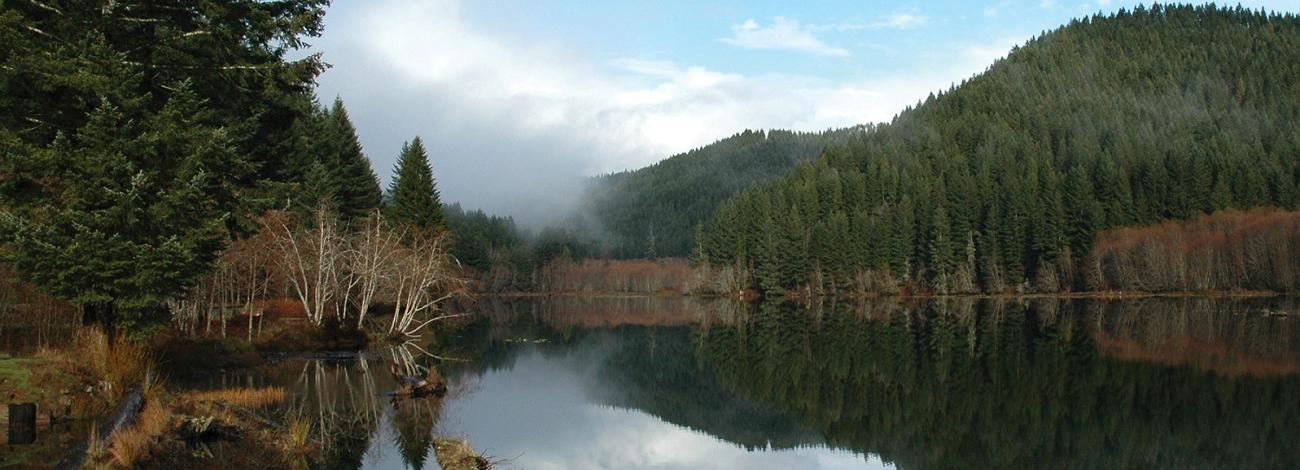
Hult Dam Project
Hult Dam & Reservoir—sometimes known as Hult Pond, Horton Pond, or Hult Marsh—is a popular recreation area along Lake Creek in Lane County, Ore. More than 50 acres of wetlands provide habitat for a rich diversity of wildlife, fish, and plant species as well as a plethora of recreational opportunities, like fishing, camping, hiking, and horseback riding.
Due to safety concerns associated with the dam, the Bureau of Land Management is considering possibilities for reducing the risk, including dam removal, which would also allow the creek to flow freely through the area.
With public input, the BLM will analyze the possibilities in an Environmental Impact Statement. The EIS will also evaluate options for recreational use, historical interpretation, habitat protection, and community safety.
The local community voice is critical to this process. The BLM wants your help in reimagining what the Hult Dam area can be.
- History of the Hult Dam
-
Did you know that Hult Pond is actually a reservoir?
The Hult Reservoir is not a naturally occurring lake (or pond). Instead, it was created when the Hult Lumber Company built a dam across Lake Creek in the 1930s or ‘40s. That dam backed up the water, creating what we know today as Hult Reservoir. Without the human-constructed dam, the reservoir would not exist, and Lake Creek would flow freely through the area.
The Hult Lumber Company built the dam to store logs for their milling operation. Courtesy photo. Why did the Hult Lumber Company build the dam?
The Hult Lumber Company built the dam in the 1930s or ‘40s to store logs for their milling operation.
To keep the mill consistently running, the company needed a stockpile. The best way to preserve the timber was to keep it wet or damp. (Today, many log storage yards use sprinklers for this same purpose.)
Storing wet logs was the sole use of the dam and reservoir. They never served any public purpose, like flood protection or irrigation.
What is the purpose of Hult Dam & Reservoir today?
Now that the Hult Lumber Company is not in operation, Hult Dam & Reservoir no longer serves its intended purpose. Unlike many other local dams, the Hult Dam never provided public services, like hydropower, flood protection, or irrigation. Today, the BLM manages the Hult Dam for recreational and historical purposes.
- Public Safety & Dam Risk
-
As always, public safety is our primary focus. We are responsible to both users of the reservoir and to people and infrastructure downstream of the dam. Accordingly, we are taking action based on the results of a 2017 risk assessment by the U.S. Army Corps of Engineers (USACE).
What is a risk assessment?
A risk assessment evaluates the safety of dam based on three factors: (1) things that could go wrong, (2) whether the dam would withstand the situation, and (3) the consequences if dam failed.
Engineers use this type of assessment used to identify safety issues, evaluate potential improvements, and measure effectiveness of repairs.
Based on the findings of the USACE assessment, the BLM designated Hult Dam as high risk.
Graphic courtesy of U.S. Army Corps of Engineers What potential hazards could impact the Hult Dam?
USACE identified two main hazards at the Hult Dam.
The primary hazard is a large flood. To prevent damage from heavy rain and rapid snowmelt in 2019, the BLM had to lower the water level in the reservoir.
Additionally, the dam was built on an ancient landslide, and ground movements could compromise the dam's structure.
How would the Hult Dam perform?
It’s impossible to know for sure how the dam would respond to a future event, but we can make educated calculations about it is likely to perform.
The average life expectancy of an earthen dam, like the Hult Dam, is 50 years. This assumes that the dam is well-designed, well-constructed, and well-maintained. The Hult Dam is more than 70 years old, which is far beyond the expected average.
We do not know very much about the original design and construction of the dam. What we do know does not indicate that it was particularly well designed, constructed, or maintained over its life.
Given common construction practices of the time, we expect that it was not designed to current standards. The lumber company built the dam on top of an ancient landslide, making its foundation inherently unstable. Despite ongoing maintenance efforts to protect public safety, the dam has received multiple cautionary ratings in recent decades.
USACE engineers determined that a large flood or ground instability could cause water to overtop or break through (breach) the dam.
What would the consequences of failure be?
If the dam gave way (or "failed"), an uncontrolled rush of water would be released downstream. This rush of water could damage Highway 36 and even lead to the loss of life in Horton.
Why is the Hult Dam high risk?
Based on the USACE study, the BLM designated Hult Dam as high risk because of the combination of potential hazards, the condition of the dam, and the consequences of dam failure
- Reimagine Your Public Lands
-
This land belongs to the American public, and we want your input throughout this planning process.
Learn how you can participate by visiting https://eplanning.blm.gov/eplanning-ui/project/99598/570.
The BLM wants your help reimagining how current and future generations could enjoy the historic Hult Dam area.
- Dam Safety Downstream
-
Throughout the planning process, we remain committed to public safety. We will continue to monitor and maintain Hult Dam until we are able to take permanent action to address the public safety hazard.
Dam safety is a shared responsibility. Everyone living or working downstream of the dam should be aware of the potential risks and how to respond.
We encourage you to work with your local emergency management agencies to understand the risks and be prepared.
It’s always a good time to plan for an emergency. Here are three places to start:
- Learn how and where to get emergency alerts.
- Develop a plan to be two weeks ready. There are resources here: https://www.oregon.gov/oem/hazardsprep/Pages/2-Weeks-Ready.aspx.
- Read the State of Oregon’s information on natural hazards and preparedness: https://www.oregon.gov/oem/hazardsprep/Pages/Cascadia-Subduction-Zone.aspx.
- Timeline
-
